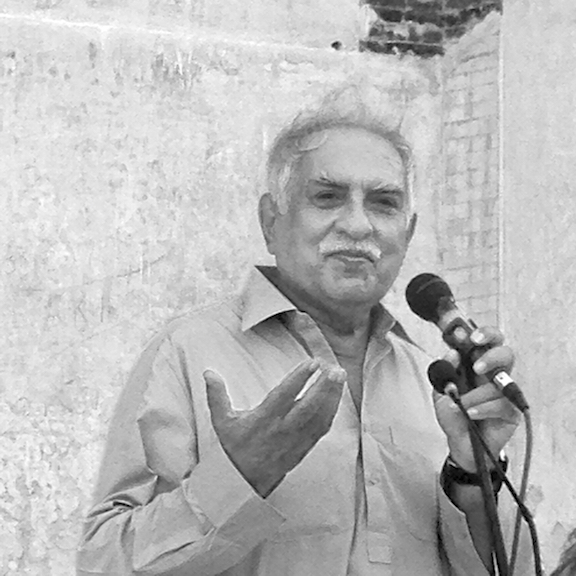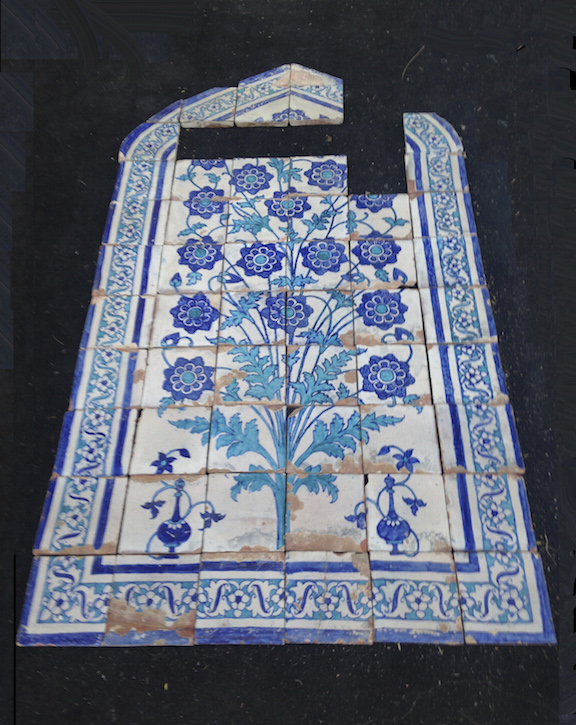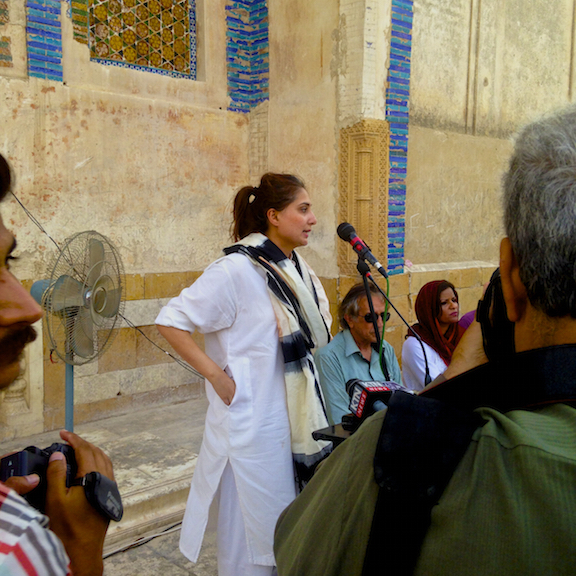I met
Marvi Mazhar, a young Architect, via
Sabeen Mahmud. She phoned me to say there was an event at Mian Ghulam Husain Kalhoro's Tomb in Hyderabad and I should go there with her. Its been a long time since I went to Hyderabad so I decided to go.
The trip was really amusing, specially seeing the expanse of Bahria complexes built via Malik Riaz. Huge. And a Funland area that has the Seven Wonders of the World repeated through large scaled constructions. No one lives there, yet, for it is all under construction. But on the way back we saw the place lit up by thousands of lights. Wow. I wish Malik Riaz would add some of his lights on to the highway, too, and make it a lot easier for the traffic.
It was a really great visit, not counting the driver sleeping on the way back and hitting a truck — but that just delayed the drive back after some 'adjustments' to the car :)
•••••
Just in case you don't know who the Mian Ghulam Husain is, let me give you a brief background — taken from the works of S. Z. Lari, H. Cousens, and a few other documents:
Once this was the Tomb of Ghulam Husain
Ghulam Husain, one of the most powerful heads of the Kalhora Dynasty, ruled Sindh, which, at that time, was a part of Ahmad Shah Durrani's Afghan empire. His rule started in 1762, when his position was confirmed by royal decree. He was awarded the Title of Shah Wardi Khan.
Between 1762 and 1765 he led three decisive campaigns against the Maratha Rao of Kutch and received the Title of Samsam-ud-Daolah (The Sword of the State). He was also given a portion of Dera Ghazi Khan for his role against the rebellions of of the Derahs in the North.
In 1762 Ghulam Husain built the Mausoleum of the famous Shah Abdul Latif Bhitai, a Sufi poet and the Patron Saint of Sindh.
He also established the city of
Hyderabad, built upon the foundations of
Neeron Kot, and set it up as the new capital of the Kalhora Dynasty. It is marked by
Pacco Qillo (The Strong Fort) that became one of the largest military garrisons in the region.
•••••
Ghulam Husain's tomb is supposedly one of the oldest surviving buildings in Hyderabad and is part of a large collection of the graves of various Kalhora rulers.
For more info about him, please read this section.
•••••
Having thought that many people would have come there often, I was surprised to find that there were a number of people in Hyderabad who had come there for the first time to attend the event that was arranged by EFT (its full name being Endowment Fund Trust for Preservation of Heritage in Sindh).
Here are some pictures from the place
Hamid Akhund opening the event
Looking out
Looking in
The Front
A closer look
The right side of the tomb
The Women's Graveyard
One of the graves outside the tomb
Hamid Akhund introduces the event and invites guests
Marvi Mazhar speaks to the audience
All the board members were there, with
Nafisa Shah heading the ceremony. There were many architects, bankers, financiers, and students who spoke. All the speeches were in Urdu, except one that was in Sindhi. Among guests was another friend and Architect,
Zain Mustafa.
The board has a lot of money and is trying hard to renovate all the marvellous sites in Sindh. Its a long process. Very difficult, too, to remove the stuff that's been painted on the old stuff, graffiti to be removed, things brought back - as far as it is possible - to the old style again.
Take a chance.
Go and see this, and lot of other places in Sindh.
Oh … and there were Public Toilets (in Pink) near the Tomb.
We were finally taken to Iftar/Dinner at the Commissioner's house. He is the youngest Commissioner in Pakistan. The house was a bit of a bore (built 1950) after the marvellous site we had seen, but the Sindhri Mangoes were great at Iftar.















